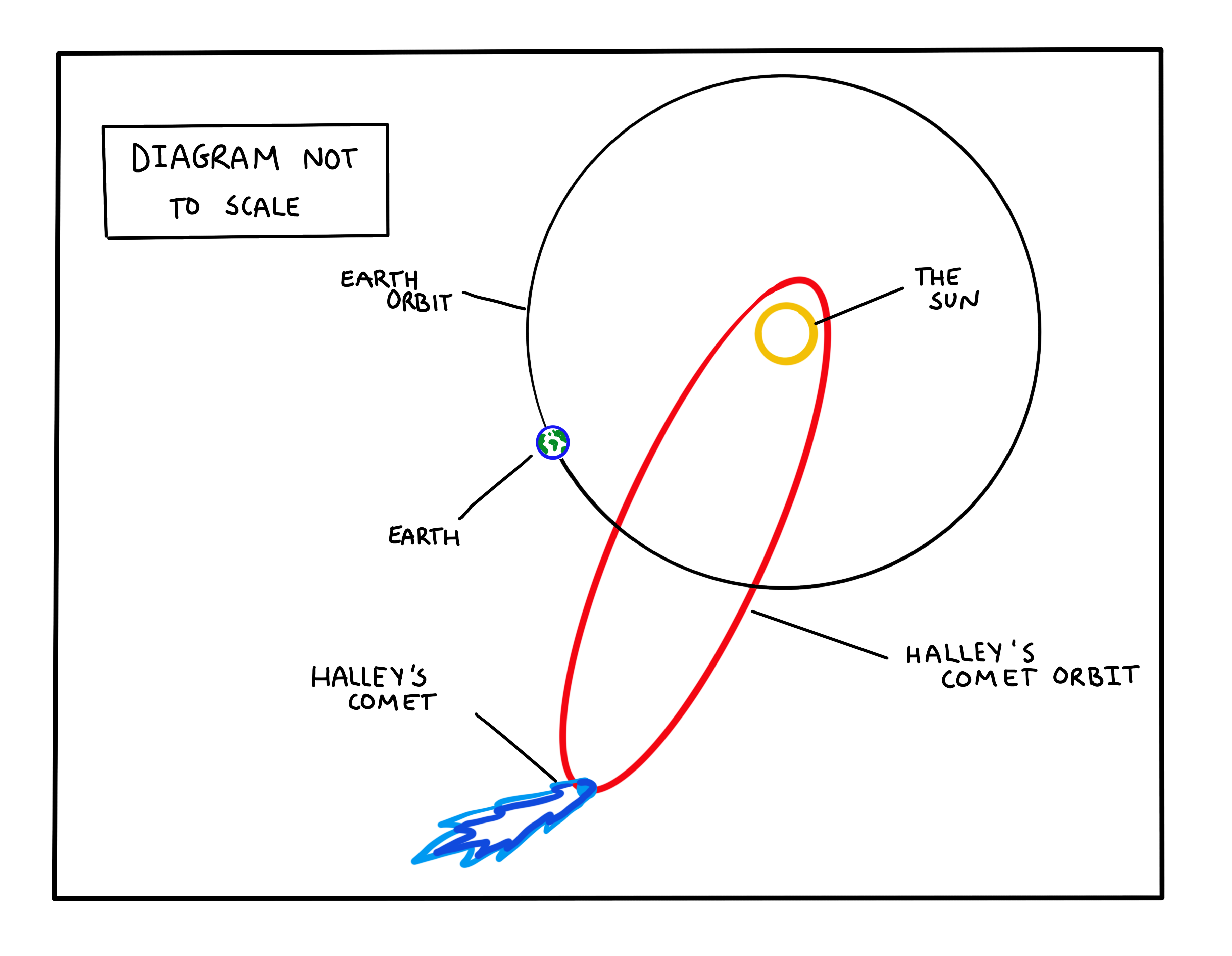Halley’s Comet has been seen throughout history as a warning of bad things to come – read on to find out about its history, science, and the challenges you might face living there!
Written by James Hayes, Galactic Challenge Volunteer
Illustrated by Saffron Zainchkovskaya, Galactic Challenge Volunteer
Imagine you’re living in the Year 1066 AD. William the Conqueror is invading Britain and suddenly, every night, there is a strange bright light in the sky with a long, brilliant tail. It moves slowly across the sky, lasting for a few months, and as it does, lots is changing in your life. You’d be forgiven for thinking that maybe this alien light had something to do with it all! Those at the time certainly did, with the Comet even depicted on the famous Bayeux Tapestry (see above).
For thousands of years, ancient civilisations would see this light in the sky and wonder just what it was, but it wasn’t until 1705 that an Astronomer named Edmond Halley would begin to understand just what it was. Edmond realised that the sightings of a comet every 75 years were not coincidences, but they were actually the same comet returning periodically, and in 1705 he predicted when it would return again. Halley said the comet would reappear in 1758 and indeed it did! Halley’s Comet is the only known comet with an orbit that allows it to appear in the night sky twice in a human lifetime, and we know that the next time it appears will be in June 2061.
This is where lots of science can take place – we have 40 years to plan all sorts of exciting experiments on the comet before it returns and lots of questions to answer. One question is about its orbit as it actually orbits in the opposite direction to all of the planets! The planets also orbit in circles around the sun, but Halley’s Comet has what is known as an “elliptical” orbit, meaning its orbit looks like a circle that has been squished. This is quite unique for objects in our solar system, and means that the comet gets very close to Earth but also moves away from it very quickly (as seen below). This could be a problem if something goes wrong on a mission to the Comet, as there would only be a limited amount of time for a rescue operation – in the year 2061, your Space Rescue Organisation is able to make the journey in two months, but time is a precious resource!
This could be a problem if something goes wrong on a mission to the Comet, as there would only be a limited amount of time for a rescue operation – in the year 2061, your Space Rescue Organisation is able to make the journey in two months, but time is a precious resource!
The comet itself is about 15 kilometres long with a diameter of 8 kilometres, in the shape of a peanut. It is made mainly of ice, with small amounts of carbon, methane, and ammonia. As Halley nears the sun, many of these elements on the surface begin to turn into gases, creating the tail, or “comal”, which gives it its distinctive appearance. Because of its small size, any astronauts on the surface will effectively be in zero gravity – creating all sorts of opportunities for science and fun, but also creating problems you will have to solve.
Halley’s Comet is a fascinating place, where we can discover secrets of our solar system, but it has the potential to be very dangerous. Perhaps those ancient civilisations that viewed it as a warning were on to something after all…
Sources:

